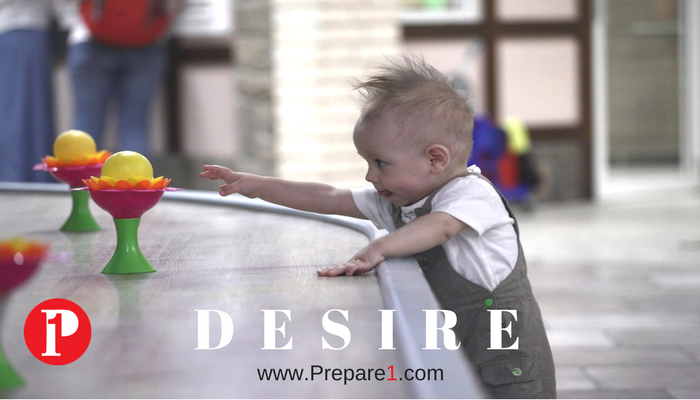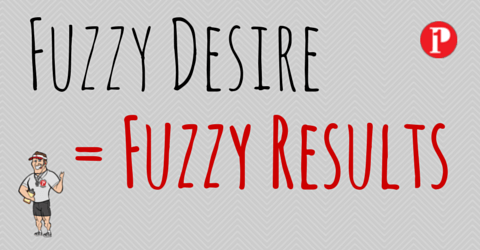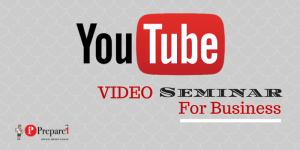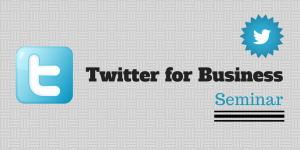
Do you desire gain?
More than you fear loss?
Fear or Desire
Like the little boy in this photo, desire drives him to reach for what he wants. He doesn’t consider the Fear of falling although that’s a real possibility.
We have an emotional association for everything that we attach to pleasure or pain. Many of our decisions are based on either desire or fear – desire to move toward something or fear of what might be. What is your basic motivation – Fear or Desire?
When putting together your social media business plan, are you operating out of DESIRE for incredible branding, website traffic, leads and growing revenues or because you FEAR the company may not get any LIKES, Shares, Comments or engagement and fail?
When putting together your annual business plan, are you operating out of DESIRE for incredible growth or because you FEAR the company may fail?
Are you working hard because you DESIRE to produce outstanding work or because you FEAR what may happen if you don’t? FEAR that your competition is overtaking you and you’ll be left behind.
When you do something special for your spouse, do you do it because you DESIRE to please them or because you FEAR they may be mad or displeased if you don’t?
What is driving your decisions?
What if you could understand the psychology of social media and use that knowledge to bring customers closer, give them more of what they want, and create better relationships?
SOCIAL MEDIA REPORT
Unless you have been hiding under a rock you will know that social media is a key part of running a business in 2017. According to the last Sensis Social Media Report, almost 50% of consumers use social media every day.
Yet only 31% of small – medium sized businesses have an effective social media engagement strategy.
Do you have one?
Struggles with social media include lack of time and resources, too many platforms and not knowing where best to position your brand.
- What to post.
- Whether to use paid advertising.
- Confusion about the best times to post.
- How much personal content to share.
- How to engage customers who are overwhelmed with content.
One of the major things I see in hesitating to use social media for business, is a a lack of confidence in your thoughts and ideas. This is a normal part of life for lots of people, and particularly if you work in your own business.

When creating a social media strategy you need to tap into your WHY, understand what you are using social media for, who are your audience and what do they need?
Making sure to create excellent content and building in self care tactics, will increase your self confidence and your success.
DESIRE
What would happen if you were to “LIKE” everything you saw on social media?
The likes, comments and posts we share on social media can often seem inconsequential, but they matter. They tap into some of the very elements that make us human, our addictions, desires, anxieties and joys.

Social media biology: Dopamine and Oxytocin
The pull of social media addiction isn’t all in our heads. It’s quite real, thanks to two chemicals our brains produce: Dopamine and Oxytocin
Dopamine
Dopamine is stimulated by unpredictability, by small bits of information, and by reward cues—pretty much the exact conditions of social media.
The pull of dopamine is so strong that studies have shown tweeting is harder for people to resist than cigarettes and alcohol.
Oxytocin
Then there’s oxytocin, sometimes referred to as “the cuddle chemical” because it’s released when you kiss or hug.
Or … tweet. In 10 minutes of social media time, oxytocin levels can rise as much as 13%—a hormonal spike equivalent to some people on their wedding day.
And all the goodwill that comes with oxytocin—lowered stress levels, feelings of love, trust, empathy, generosity—comes with social media, too.
As a result, social media users have shown to be more trusting than the average Internet user. The typical Facebook user is 43% more likely than other Internet users to feel that most people can be trusted.
So between dopamine and oxytocin, social networking not only comes with a lot of great feelings, it’s also really hard to stop wanting more of it.
FEAR
Fear of failure, the single biggest reason for failure in adult life. Fear of failure settles in your solar plexus and paralyzes you, stopping you from even taking the first step. In order to be all you can be, including becoming a millionaire, the first thing you have to learn to do is to confront your fears.
You must learn to control your fears, to master your fears, act in spite of your fears, and be goal oriented in order to gain financial independence.

Fear is a vital response to physical and emotional danger—if we didn’t feel it, we couldn’t protect ourselves from legitimate threats. But often we fear situations that are far from life-or-death, and thus hang back for no good reason.
Who wants to embarrass themselves on Social Media? Or what you post and share…Nobody responds or cares.
Maybe we have a fear of technology and don’t know how to post on a mobile Facebook app, so we don’t.
Traumas or bad experiences can trigger a fear response within us that is hard to quell. Yet exposing ourselves to our personal demons is the best way to move past them.
Fortunately, all fears are learned; no one is born with fears. Fears can therefore be unlearned by practicing self discipline repeatedly with regard to fear until it goes away.
THE TURNING POINT
“Why are some people more successful than others?”
Philosopher Bertrand Russell wrote, “The very best proof that something can be done is the fact that others have already done it.”
The law of cause and effect says that for every effect there is a specific cause or causes.
This law says that everything happens for a reason. It says that success, business or personal, is not an accident. Failure is not an accident. Both have specific cause-and-effect relationships that explain them.
In its simplest form, the law of cause and effect says that if there is an effect in your life that you want, you merely have to trace that effect back and find someone who at one time did not have that effect. You find out what that person did to achieve the effect you desire.
What are the successful people doing on Social Media?
You then do the same things he or she did. If you do the same things other successful people do, eventually you will get the same results they do. It is no miracle. It is a matter of law.
CREATE A STRATEGY FOR YOUR CONTENT
Randomly posting things all over social media may be fine for a personal account, but for a business, you need to have a clear strategy in place for when you post.
- Why you are posting.
- What your are posting.
- Who you are posting to.
- Who you would like to post to.
Part of that may be to post some on the spot content – not everything has to be premeditated, and some of the best content happens on the move, in real time. Tweets at events, Instagram pics while you are wandering the streets in a new town, a Facebook post after you find out a really helpful piece of research that will help your community. However it should still fit with your overall brand message and plan, and be of relevance to your audience.
FOCUS ON RESULTS
Do you know if your social media efforts are worthwhile?
Can social media be measured? Of course it can. But it’s not always easy.
Brand Health
Do you know how people are talking about your service, your products or customer experience?
Marketing Optimization
Social media listening can help you fine-tune your marketing efforts to better find your target audience. For many businesses, Google Analytics might be the best tool.
Your goal is to determine what terms people are searching and from what sites they are coming to your site. Some of the things to optimize are campaigns, content, channels, timing and influencers.
Key examples of social media metrics to track include:
- Reach
- Site traffic
- Leads generated
- Sign-ups and conversions
- Revenue generated
- Likes, Share, Comments
- FB Insights
It’s important for social data to be relevant to stakeholders within your organization, not just social media practitioners. Tying social media to the big picture by linking it to organizational and departmental goals will help you achieve that.
Setting goals
Here are some ideas on what to focus on:
Goal No. 1: Increase social media engagement
- Social media metrics to measure: Likes, Shares, Comments, Retweets, Mentions, Favorites
Goal No. 2: Increase customer acquisition on your website
- Social media metrics to measure: URL clicks and traffic from social media
Goal No. 3: Increase brand awareness
- Social media metrics to measure: Follower growth rate, percentage change over time in followers, Twitter sentiment, reach by region, clicks by region
Make adjustments
Once you’ve identified what works and what doesn’t work for your organization on social, it’s time to adjust your strategy. The point of tracking your social media ROI isn’t just to prove your social campaigns are valuable, it’s to increase their value over time. Go back and take a look at the goals of your specific campaign and evaluate how they tie-into the organization’s overall goals.
THE GOLDEN RULE
The great truths of life are simple.
It is amazing how many problems, both personal and social, could be resolved if everyone decided to treat other people the way they would like to be treated.
- Listen to people the way you would like to be listened to.
- Like, Share and Comment on other peoples social media posts.
- Sell your products and services the way you would like others to sell their products and services to you.
- Be courteous and respectful to other people, just as you would like them to be courteous and respectful to you.
- Be patient and understanding with people when they make mistakes, just as you would like them to be patient and understanding with you when you make mistakes.
So what’s driving you?
About Blair

Blair Evan Ball is a Social Media Coach and founder of Prepare1, a company that works with businesses, individuals and non-profits. He is a former executive with a Fortune 50 company, and his national division did $1Billion+ in sales annually.
Blair has written three e-books: Facebook for Business Made Easy, Facebook Pages for Business Made Easy, and WordPress Blog Setup Made Easy.
Blair also educates, trains entrepreneurs and business professionals how to amplify their brand, increase revenues, and raise more funds.
![[Study] How Will Businesses Change Their Social Media Activities 5 Golden Rules for Sharing on Social Media](https://www.prepare1.com/wp-content/uploads/2014/03/COACH-logohat-162x300.jpg) The Race is ON! | PREPARE | Get into the Game and WIN!
The Race is ON! | PREPARE | Get into the Game and WIN!










Comments on this entry are closed.
{ 1 trackback }